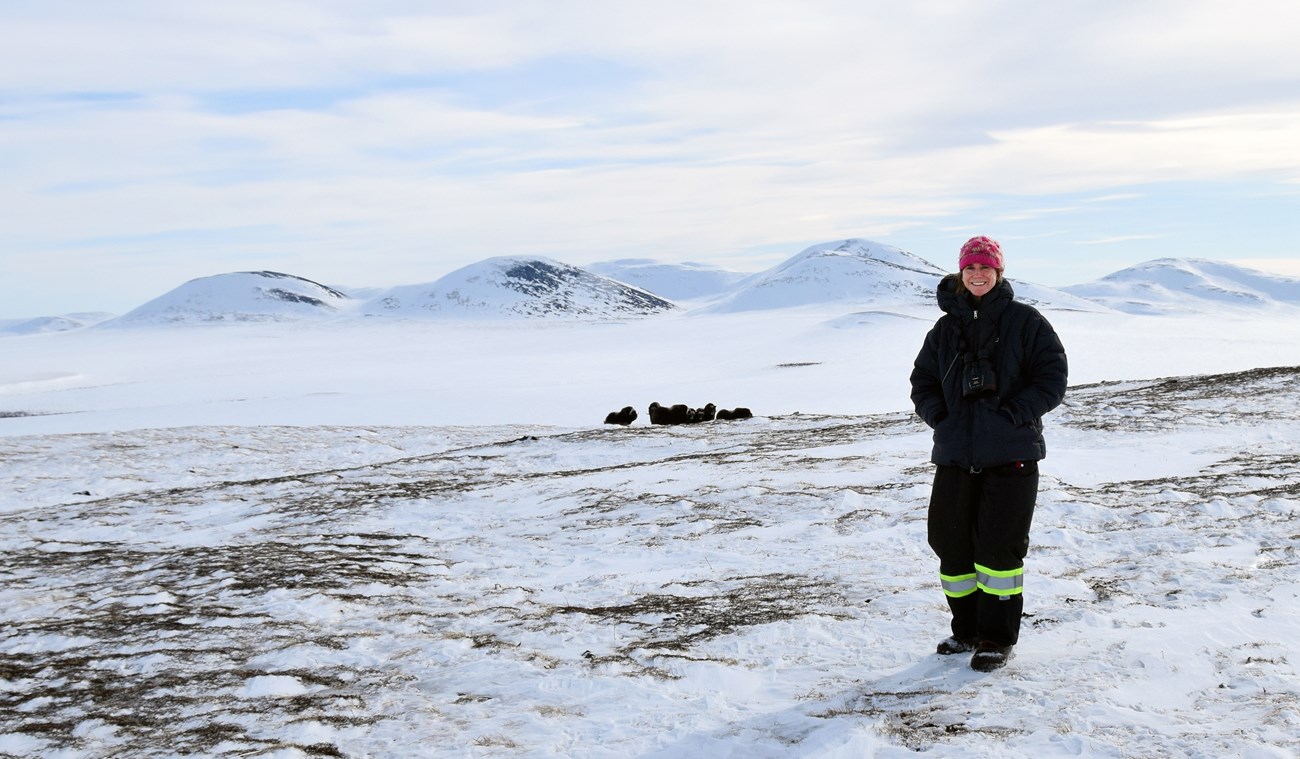Part of a series of articles titled Yellowstone Science - Our Scientists.
Next: Douglas W. Smith
Article

Hillary L. Robison
Deputy Chief, Yellowstone Center for Resources
Conservation, Ecology, Brown Bears, Muskox, and Insects
Education
Ph.D. Program in Ecology, Evolution & Conservation Biology, University of Nevada, Reno, 2009
Dissertation: Relationships between Army Cutworm Moths and Grizzly Bear Conservation
Advisor: Peter F. Brussard, PhD
Current Position
2018 - Present
Deputy Chief, Yellowstone Center for Resources, Yellowstone National Park (YNP), WY, MT, ID
Selected Publications
Robison, H.L., J.H. Schmidt, K.L. Rattenbury, B.S. Shults, and S.D. Miller. 2018. Protocol for monitoring brown bears: Arctic Network (ARCN), version 1.0. Natural Resource Report. NPS/AKRO/NRR—2018/1763. National Park Service. Fort Collins, Colorado.
Schmidt, J.H., H.L. Robison, and S.D. Miller. 2018. Protocol implementation plan for monitoring muskox sex-age composition in the Arctic Network. Natural Resource Report. NPS/ARCN/NRR—2018/1795. National Park Service. Fort Collins, Colorado.
Schmidt, J.H., K.L. Rattenbury, H.L. Robison, T. S. Gorn, and B. S. Shults. 2017. Using non-invasive mark-resight and sign occupancy surveys to monitor low-density brown bear populations across large landscapes. Biological Conservation. 207:47-54.
Robison, H. L., J. H. Schmidt, K. L. Rattenbury, T. S. Gorn, and B. S. Shults. 2016. Brown bear population on the Seward Peninsula, including Bering Land Bridge National Preserve. Natural Resource Condition Assessment, National Park Service Arctic Network Inventory and Monitoring Program. Fairbanks, AK.
Robison, H. L., J. H. Schmidt, B. Saito, R. Klimstra, T. S. Gorn, W. Dunker, and A. Craig. 2016. Muskox populations in northwest arctic Alaska. Natural Resource Condition Assessment, National Park Service Arctic Network Inventory and Monitoring Program. Fairbanks, AK.
Robison H. L. 2016. Muskox: an iconic arctic species, then and now. Alaska Park Science. 15(2):63-65.
Federal, Provincial and Territorial Governments of Canada. 2010. Canadian Biodiversity: Ecosystem Status and Trends 2010. Canadian Councils of Resource Ministers. Ottawa, ON. vi + 142 p. Government of Nunavut contributors: H. Robison, M. Dumond, D. Gissing.https://biodivcanada.chm-cbd.net/ecosystem-status-trends-2010/canadian-biodiversity-ecosystem-status-and-trends-2010-full-report
Robison, H. L. 2009. Relationships between army cutworm moths and grizzly bear conservation. University of Nevada, Reno. Ph.D. Dissertation.
Robison, H. L., C. C. Schwartz, J. D. Petty, P. F. Brussard. 2006. Assessment of pesticide residues in army cutworm moths (Euxoa auxiliaris) from the Greater Yellowstone Ecosystem and their potential consequences to foraging grizzly bears (Ursus arctos horribilis). Chemosphere. 64: 1704-1712.
Gunther, K. G., M. J. Biel, and H. L. Robison. 1998. Factors influencing the frequency of road-killed wildlife in Yellowstone National Park. Pp. 32-42 in Evink, G.L., P. Garrett, D. Zeigler, and J. Berry, eds. 1998. Proc. of Internat. Conf. On Wildl. Ecol. and Transp., FL-ER-69-98, FL Dept. of Transp., Tallahassee, Florida. 263pp.
Part of a series of articles titled Yellowstone Science - Our Scientists.
Next: Douglas W. Smith
Last updated: April 24, 2019